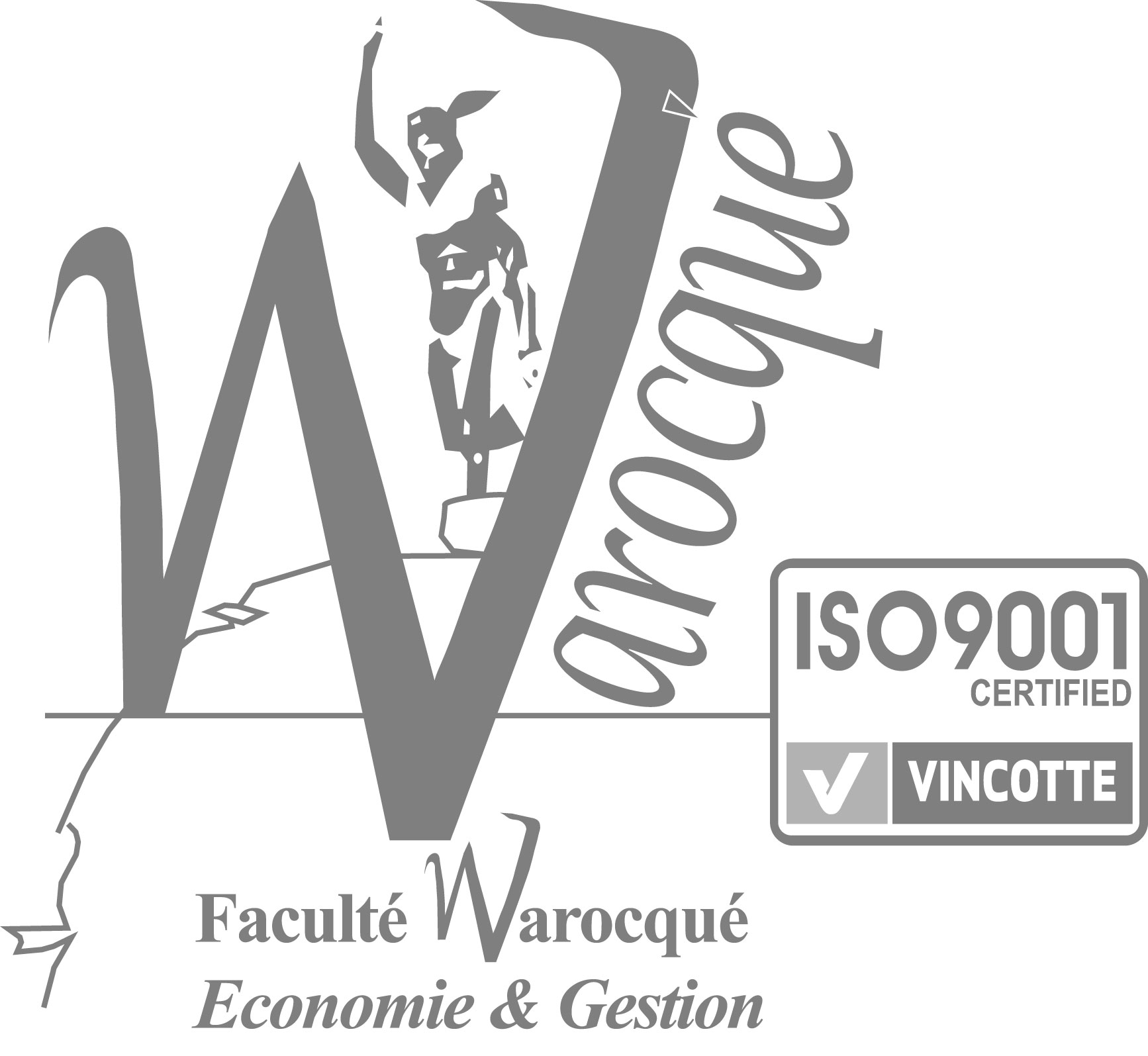 | Study programme 2020-2021 | Français | |
 | Advanced Microeconomics | ||
Programme component of Bachelor's à la Warocqué School of Business and Economics |
| Students are asked to consult the ECTS course descriptions for each learning activity (AA) to know what special Covid-19 assessment methods are possibly planned for the end of Q3 |
|---|
| Code | Type | Head of UE | Department’s contact details | Teacher(s) |
|---|---|---|---|---|
| UW-B3-SGEGIG-005-M | Compulsory UE | DUPREZ Cédric | W707 - Analyse microéconomique |
|
| Language of instruction | Language of assessment | HT(*) | HTPE(*) | HTPS(*) | HR(*) | HD(*) | Credits | Weighting | Term |
|---|---|---|---|---|---|---|---|---|---|
| Français | 20 | 10 | 0 | 0 | 0 | 3 | 3.00 | 1st term |
| AA Code | Teaching Activity (AA) | HT(*) | HTPE(*) | HTPS(*) | HR(*) | HD(*) | Term | Weighting |
|---|---|---|---|---|---|---|---|---|
| W-ANMI-004 | Advanced Microeconomics - AAEP | 17 | 10 | 0 | 0 | 0 | Q1 | |
| W-ANMI-008 | Advanced Microeconomics - AAEHP | 3 | 0 | 0 | 0 | 0 | Q1 |
| Programme component | ||
|---|---|---|
 | UW-B2-SGEGIG-007-M Economics | |
Objectives of Programme's Learning Outcomes
- Implement an academic view on knowledge, particularly through the mastery of methods and literature research tools.
- Develop and structure reasoning by basing it on suitable scientific arguments
- Actively master the fundamental concepts and models of economic sciences and management sciences
- Identify and explain the concepts, principles and models of fundamental theoretical trends in economic sciences and management sciences and their applications.
- Understand how organisations and markets work
- Critically compare knowledge acquired to real situations.
- Demonstrate an acute sense of analysis, criticism and ethics in relation to various issues in economics and management.
- Demonstrate working and analytical rigour.
- Be rigorous and independent in learning, particularly through adequate planning of activities to be undertaken in order to best utilise the time available.
- Develop their scientific curiosity and open-mindedness
Learning Outcomes of UE
To develop an intuitive understanding of models describing companies and client's decision-making: partial market equilibrium, general equilibrium, market failures, strategic interactions (game theory), asymmetric information...
To be able to interpret these market equilibria, maximizing models and models of strategic interaction with graphical representations.
To apply the above-cited theories in numeric exercises. In many cases these will take the form of finding an optimum (profit, quantity to produce, utility...) that is obtained by maximizing a function or by solving a system of 2 equations.
Content of UE
Companies' decisions in a competitive market, consumer surplus and producer surplus in different market structures (partial equilibrium models), game theory, general equilibrium (Edgeworth box), market failures, such as asymetric information, extrenalities and public goods. Regulations that will decrease these market failures. An introduction to behavioural economics, including irrationality and altruism in decision-making. Economics of inequality.
Prior Experience
The course will build on basic insignts from the course Microeconomics 1: supply and demand functions, price elasticity, maximisation of utility, marginal cost vs average cost, profit maximisation etc. The students will need basic mathematical skills: linear, quadratic and logarithmic functions, derivatives, systems of equations...
Type of Assessment for UE in Q1
- Written examination
Q1 UE Assessment Comments
Not applicable.
Type of Assessment for UE in Q2
- Written examination
Q2 UE Assessment Comments
Not applicable.
Type of Assessment for UE in Q3
- Written examination
Q3 UE Assessment Comments
Idem Term 2.
Type of Resit Assessment for UE in Q1 (BAB1)
- N/A
Q1 UE Resit Assessment Comments (BAB1)
Not applicable.
Type of Teaching Activity/Activities
| AA | Type of Teaching Activity/Activities |
|---|---|
| W-ANMI-004 |
|
| W-ANMI-008 |
|
Mode of delivery
| AA | Mode of delivery |
|---|---|
| W-ANMI-004 |
|
| W-ANMI-008 |
|
Required Reading
| AA | |
|---|---|
| W-ANMI-004 | |
| W-ANMI-008 |
Required Learning Resources/Tools
| AA | Required Learning Resources/Tools |
|---|---|
| W-ANMI-004 | Pindyck R., Rubinfeld D., (2017) Microéconomie, Pearson. |
| W-ANMI-008 | Pindyck R., Rubinfeld D., (2017) Microéconomie, Pearson. |
Recommended Reading
| AA | |
|---|---|
| W-ANMI-004 | |
| W-ANMI-008 |
Recommended Learning Resources/Tools
| AA | Recommended Learning Resources/Tools |
|---|---|
| W-ANMI-004 | Pindyck R., Rubinfield D. 2017. Microéconomie. Pearson, 800p. There is a powerpoint presentation of every lecture and all the solutions of the questions and exercises will be given |
| W-ANMI-008 | Pindyck R., Rubinfield D. 2017. Microéconomie. Pearson, 800p. There is a powerpoint presentation of every lecture and all the solutions of the questions and exercises will be given |
Other Recommended Reading
| AA | Other Recommended Reading |
|---|---|
| W-ANMI-004 | Not applicable |
| W-ANMI-008 | Not applicable |